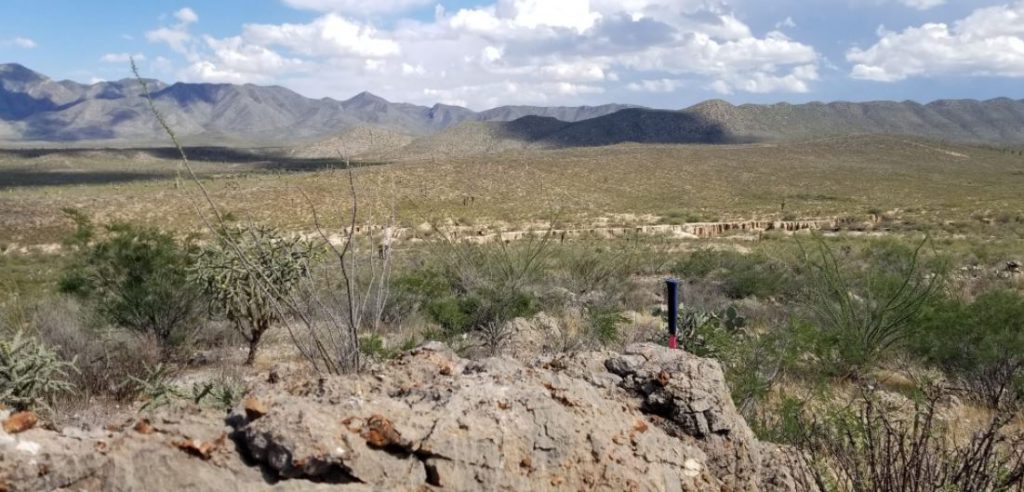Southern Empire Resources stakes La Loma gold property, Mexico

Southern Empire Resources Corp. [SMP-TSXV; SMPEF-OTC; 5RE-FSE] has acquired the 23,750-hectare La Loma gold property by staking. La Loma is located in Durango State, Mexico approximately 50 km southeast of Southern Empire’s Pedro Gold Project and 35 km west-southwest of the major city of Torreon.
Southern Empire also announces the expansion of its recently optioned Centauro Gold Project located near Jimenez, Chihuahua from an original 600 ha to 4,432 ha (10,951 acres) with the staking of the Tauros and Centauro 2 claims.
“Southern Empire’s La Loma, Pedro and Centauro gold projects support our theory that a northwest trending metallogenic belt of “Carlin-style” and/or low sulphidation epithermal gold deposits extends through northern central Mexico. Our projects all exhibit many of the geological and mineralogical features that define these important precious metal deposit types,” stated David Tupper, Southern Empire’s VP of Exploration.
Southern Empire’s La Loma, Pedro, and Centauro Gold Projects occur within the north Mexican Oligocene Basin and Range physiographic province. These three project areas define a 150-km trend of gold occurrences that are associated with arsenic-mercury-antimony mineralization, together with silica and clay alteration, all hosted in the same package of Cretaceous limestones and mudstones and Tertiary ignimbrite eruptive and polymictic conglomerate lithologies.
A significant portion of the La Loma property covers Terrano Naccional (federal land) and is therefore unencumbered by private or communal Ejido ownership. Access is limited to several broad, ephemeral riverbeds (arroyos) extending from the south.
The La Loma property covers a large, unexplored area having gold, arsenic, antimony, mercury, molybdenum, and silver stream sediment geochemical anomalies as reported by the Secretaria de Economia de Mexico, in 2006. This government stream sediment sampling survey was completed at a low, regional density.
Hyperspectral mapping shows that these geochemical anomalies are often coincident with zones of strong silica alteration.
The SGM regional geochemical sediment sample results also suggest significant potential for Carbonate Replacement Deposit (CRD) mineralization in the La Loma area, especially with the Ojuela and La Platosa CRD mines (both now closed) located only 50 km to the north. Significant anomalies supporting the prospectivity for CRD mineralization also occur to the southeast of the La Loma claim, however this is a protected area.
At La Loma, Southern Empire has planned exploration programs for spring 2023 that will include higher density stream sediment sampling, prospecting and preliminary geological mapping.
The Centauro property has been significantly expanded by staking two claims totalling 3,832 ha that surround the 600-ha claim block, which is held under option by Southern Empire. This staking extends the project area up to 7 km to the west.
Southern Empire has initiated negotiations to secure surface access rights at the Centauro Gold Project with the local rancher owners who have worked with the claim owner for more than 30 years.
In northeastern Durango State, Mexico, Southern Empire has an option to acquire a 100% beneficial interest in the 1,750-hectare Pedro Gold Project. At Pedro, in the spring of 2022, Southern Empire drilled gold mineralization approximately 800 metres from 2014 drilling by a subsidiary of Newmont Mining Corp. Gold is present in 12 of the 17 holes drilled at Pedro to date.
In the Cargo Muchacho mountains of Imperial County, California, Southern Empire owns 100% of the historical gold-producing American Girl mine property and holds options to acquire a 100% interest in the adjacent 2,160-hectare (5,338-acre) Oro Cruz Property located approximately 22.5 km (14 miles) southeast of the operating Mesquite gold mine of Equinox Gold Corp.
At Oro Cruz, extensive historical drilling and large-scale open-pit and underground mining of the American Girl, Padre y Madre, Queen, and Cross oxide gold deposits by the American Girl Mining Joint Venture occurred between 1987 and 1996. During that time, gold was recovered by either heap leaching of lower-grade, or milling of higher-grade ores until AGMJV operations ceased in late 1996 because of declining gold prices leaving the Oro Cruz Property with many gold exploration targets in addition to a historical inferred resource estimate, reported In 2011 by Lincoln Mining Corp., totaling 341,800 ounces gold based on 4,386,000 tonnes averaging 2.2 gr/t gold at a cut-off grade of 0.68 g/t gold (4,835,000 tons at 0.07 oz/ton gold ton.
